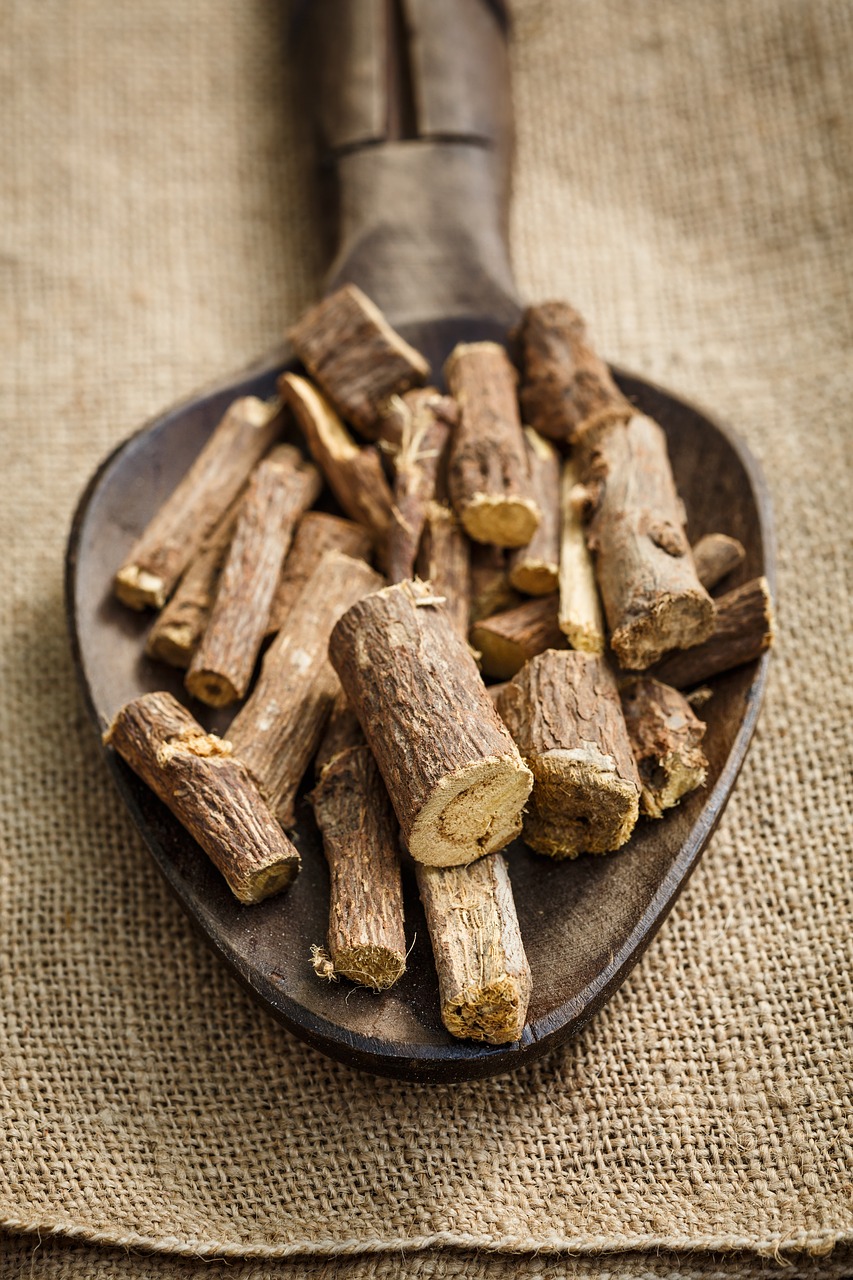Plant Allies: Licorice
Hello dear friends!
I was obsessed with black licorice when I was younger. Like, seriously OBSESSED. I would scope out the best black licorice wands, or scottie dogs, or those little pinwheels whenever I could, especially on vacation. I hoarded the black jellybeans...not like anyone else wanted them, but whatever! I always asked for black licorice for my birthday, in my Easter basket, and in my Xmas stocking.
Now, some black licorice doesn't have any actual licorice in it (it’s flavored with anise seed, which has a similar flavor), but many brands do. And now I have an inkling of why my body loved it so much!
I was diagnosed with hypothyroidism when I was just 14, and had been showing symptoms for a couple of years prior of slight fatigue, cold hands/feet, brittle hair and other issues that no child should have to deal with. It’s my thought that somehow I was drawn to licorice because of its strengthening effects for the adrenal glands and how it seemed to energize and warm my body.
Fast forward a few more years when I was in college, and really starting to get sick with chronic fatigue. I noticed I had even stronger cravings for licorice than before! (Are you guys catching on to one of the powers of licorice?) Now, as an herbalist and health coach, I use licorice on a regular basis, and recommend it to most people who have adrenal weakness or energy issues.
So, let’s explore more about this incredible herb!
Licorice (Glycyrrhiza glabra)
Licorice is a member of the Fabaceae family, and there are a variety of types of licorice (Turkish, Spanish, Russian, etc…) plants in the world. It is one of the most widely used herbs across the globe, but plays a particularly important role in Traditional Chinese Medicine. It is a cooling, pungent herb that is sometimes known as the “sweet root” with an extract that is 30-50 times stronger than sugar!
The roots of the licorice plant are harvested and dried, before use. It can be utilized in teas and decoctions, tinctures, capsules, and sometimes topically. You can even chew on the root itself. In many herbalist traditions, licorice is known as the “peacemaker herb” (or “guiding herb” in TCM) and is said to balance and enhance just about any other herbal mixture. Licorice root is a powerful adaptogen, working on many levels to bring body systems back into balance and boost resilience.
Note: Chinese licorice (Glycyrrhiza uralensis) is different from most types of licorice on the market, and has slightly different properties than we will discuss here.
Medical/Physical Uses:
Licorice root has been shown to:
Relieve GI distress
Reduce heartburn
Increase blood pressure
Heal ulcers
Support adrenal function
Heal leaky gut syndrome
Enhance stamina
Boost immunity, particularly to viruses
Soothe sore throats
Reduce PMS symptoms
Relieve pain
Enhance libido and sexual performance
Energetics/Properties:
Slightly cooling, moistening, sweet.
Antispasmodic, demulcent, anti inflammatory, antioxidant, adaptogenic, tonifying, expectorant, laxative.
Works well for the solar plexus and sacral chakras.
Emotional/Spiritual uses:
Licorice root is associated mainly with the feminine, and has slight estrogenic properties. However, it does have some masculine energy as well, lending strength, assertiveness, and stamina.
Ruling planets: Venus, Mars
Zodiac signs: Scorpio, Leo
Element: water
Celebration: Beltane, Litha
From a ritual standpoint, licorice has long been used to lend strength to spellwork, especially binding spells and love spells. Licorice has been incorporated into sex magick, tantra, and other intimate spiritual practices as well. It is sometimes known as an herb of beauty, domination, and lust.
Sprinkle licorice root in the footprints of a lover, to keep them from straying. Leave licorice root wands on your altar or by your bedside, to invite passion and protection.
It is used as a fortifier in many senses of the term. It fortifies herbal medicine blends (remember, the peacemaker herb), it fortifies the libido and sexual function, it fortifies the willpower and self-control, and it fortifies the gut lining.
Licorice is sometimes burned in ritual, or ingested prior to spiritual work. It is also sometimes blended into oils, perfumes, or incense.
Ways to use licorice
I personally blend licorice into many of my herbal tinctures and teas. You can also chew on licorice roots or natural licorice candy.
Licorice is easily taken in tincture or glycerite form, especially if you don’t like the taste.
Important note of caution: if you have high blood pressure, are pregnant, or struggle with edema, licorice root may not be a good choice for you. However, there is something called DGL (deglycyrrhizinated licorice) that is safe for most people- look for this supplement instead.
So, friends, what do you think? Are you a fan of licorice? Anyone else out there with a childhood love of black licorice candy? (I can’t be the only one!)
If you want to know more about licorice or how to safely incorporate it into your fatigue-healing or gut-healing protocols, get in touch with me. I’m happy to help.
And as always, my friends…
~ Take care and be well ~





